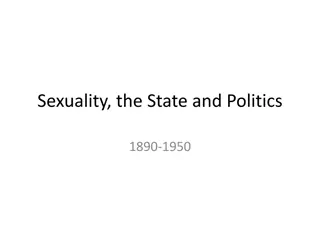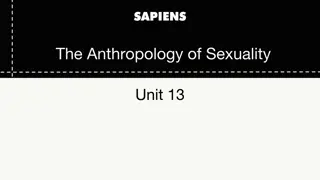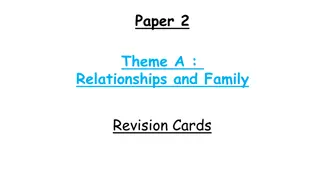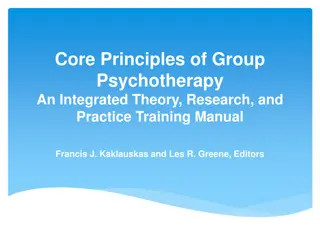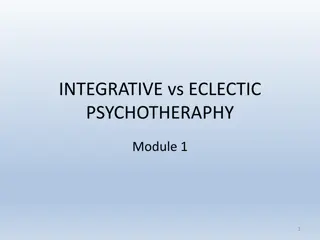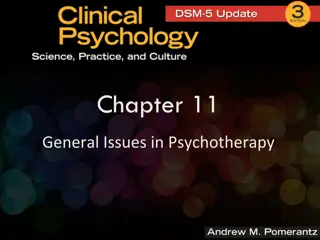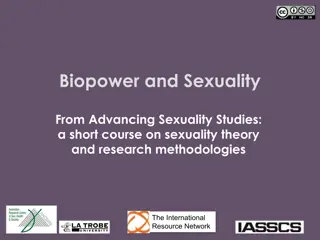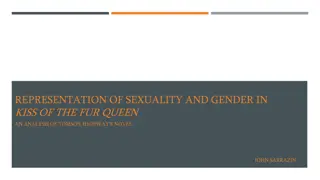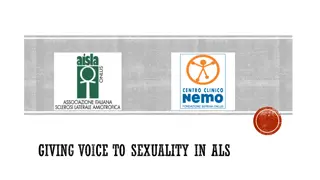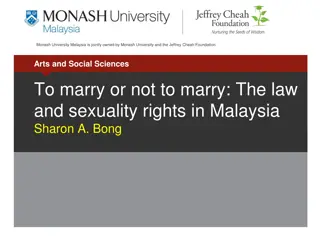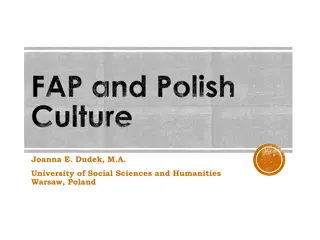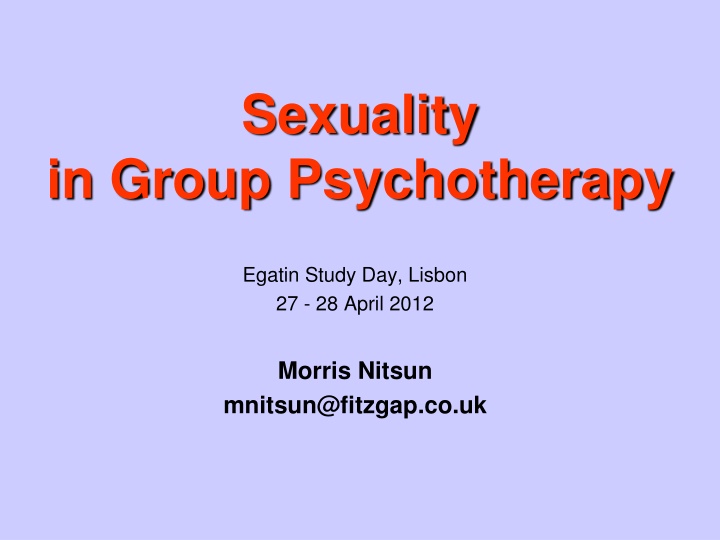
Sexuality in Group Psychotherapy: Understanding Dynamics and Perspectives
Marginalization of desire and sexuality in group psychotherapy, influence of shame and fear, link between body and shame, differing views on sexuality in group analytic psychotherapy. Exploration of sexuality in psychoanalysis and group analysis, challenges in addressing sexuality in therapy, evolving perspectives on sexual norms and practices. Examining the embodied group, erotic imagination, group morality, and the role of the group as witness in understanding and working with sexuality in a therapeutic setting.
Download Presentation

Please find below an Image/Link to download the presentation.
The content on the website is provided AS IS for your information and personal use only. It may not be sold, licensed, or shared on other websites without obtaining consent from the author. If you encounter any issues during the download, it is possible that the publisher has removed the file from their server.
You are allowed to download the files provided on this website for personal or commercial use, subject to the condition that they are used lawfully. All files are the property of their respective owners.
The content on the website is provided AS IS for your information and personal use only. It may not be sold, licensed, or shared on other websites without obtaining consent from the author.
E N D
Presentation Transcript
Sexuality in Group Psychotherapy Egatin Study Day, Lisbon 27 - 28 April 2012 Morris Nitsun mnitsun@fitzgap.co.uk
Introduction The marginalization of desire and sexuality in group psychotherapy (Nitsun, 2006) The personal nature of sexuality and the influence of shame and fear of exposure The link between the body, sexuality and shame The intra-individual perspective of sexuality Differing views of sexuality as a subject in group analytic psychotherapy
Sex and psychoanalysis Sexuality the stimulus for the birth of psychoanalysis in late 19thCentury Vienna Dominant theme in subsequent decades Problematic link between theory and practice and how to deal with sexuality as a theme in the consulting room Anxiety about sexual enactment in consulting room Changing emphasis in object relations theory The de-sexualization of psychoanalysis (Mann 2003) Normative approach to sexuality based on the discourse of nature (Dimen .) out of touch with contemporary changes in the sexual subject A paradoxical influence both liberalizing and restraining
Sexuality in group analysis Opposite to psychoanalysis very little discourse on sexuality and desire Foulkes put limited emphasis on sexuality, almost nothing on desire, and adopted the conservative norms of the time Lack of an adequate framework for considering sexuality creates uncertainty about dealing with it in group Lack of a discourse leads to an uncritical absorption of assumptions about sexuality in general and its place in psychotherapy in particular At odds with contemporary changes in the sexual landscape, largely through the internet and social networking
A group psychotherapy perspective of sexuality Four principles - The embodied group The erotic imagination Group morality The group as witness
The embodied group Sexuality present in groups Moeller (2002) a highly charged libidinal network Tylim (2003) a theatre of desire This obscured by emphasis on verbal communication and relationships in the mind Behr and Hearst (2005) a meeting of minds The erotic imagination The individual erotic imagination A group erotic imagination Conscious and unconscious fantasy The freer the erotic imagination, the more scope for expressing sexuality in the group
Group morality Elias (1978) the difference between necessary restraints and unnecessary restraints The group s representation of morality The potential to develop a more benign, less critical morality The mitigation of shame The group as witness Re-contextualizing intimacy An opportunity to share sexual experience and history in a new social context The benefit of different points of view
The sexual self The subjective sexual self sexual desire, private fantasies, auto-erotic experience The relational sexual self how the person engages sexually with another, sexual behavior, the nature of the coital act The social sexual self the sexual role the person takes in the wider group linked to identity and self representation Interconnection (and disconnection) between these selves
Clinical illustration Karen, age 27, joined twice-weekly analytic group Very limited and disturbed sexual self (also relational and social) Borderline characteristics marked mood swings, sense of fragmentation, eating disorder Present life situation living with Sam and his parents Sexual history abuse by grandfather Uncertainty and shame about this Angry withdrawal from her family Unsatisfactory previous psychotherapy
Karen (continued) Stayed for two years Erratic attendance and behaviour in the group at the start Very low self-esteem Extremely sensitive to judgement and criticism in the group Gradually gained trust in the group Spoke about experience of sexual abuse Shared sexual anxieties and inhibitions Very open and imaginative response from rest of group Affirmation of her attractiveness and playfulness
Courage to leave her current home Remade contact with own family Moved to independent accommodation Increasing friendships New relationships with men First serious relationship after Sam Sexual awakening shared with group More general improvement Decision to leave group Sad but positive goodbye
The therapeutic journey for Karen and the group the embodied group the erotic imagination benign group morality group as witness The group s representation of Strengthening of the sexual self subjective relational social sexual self

